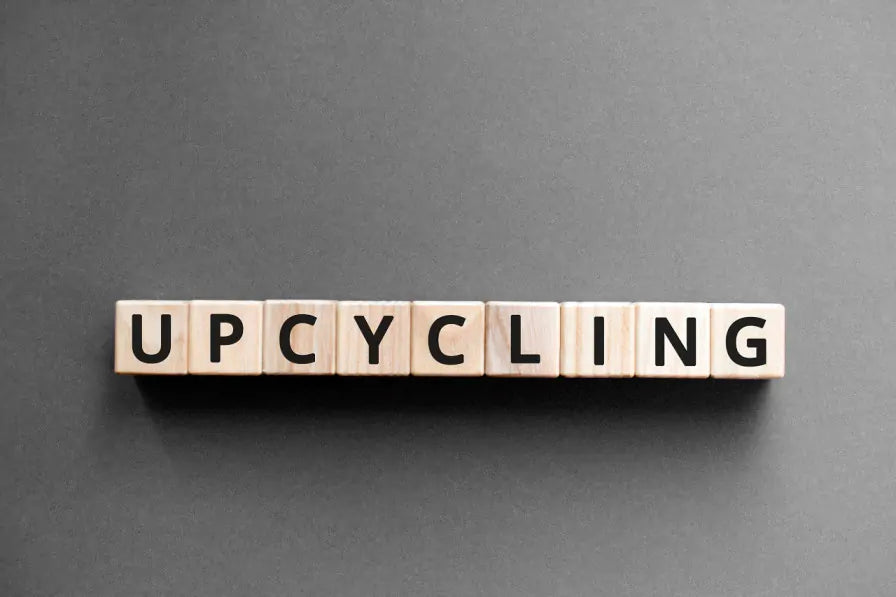Your basket is currently empty.
Shop NowUpcycling WiTHiNTENT

Upcycling WiTHiNTENT
Upcycling has become popular in recent years. An increasing need to preserve the planet’s resources in the face of population growth, and to be less wasteful in the face of austerity has led many people to reuse old items and materials to make new items. Upcycling can produce something that is more valuable than the original product or material.
How is upcycling different from recycling?
When products are recycled, they are broken down to be reused. Plastic is shredded and made into pellets, and glass is broken down and melted. The recycling process tends to affect the quality of the materials.
Upcycling looks at an unwanted item and the materials it’s made from as a resource. It’s all about repurposing something, for example, sanding down a piece of furniture and repainting it. Upcycling adds value.
Both recycling and upcycling are important as they reduce the waste that is thrown away and sent to landfill.
The benefits of upcycling
It reduces landfill
Even though we are getting better at recycling, a huge amount of waste still ends up in landfill, and once it’s there it can take forever to decompose. Meanwhile, toxins leach into the soil and find their way into waterways.
Upcycling reduces the amount of waste that gets sent to landfill because items are repurposed. All that’s required is some creativity.
It reduces greenhouse emissions
By reducing the amount of waste sent to landfill, greenhouse gas emissions are also reduced. These emissions contribute to global warming, so reducing them is a good way to protect the environment.
Cleaner waterways
Reducing landfill reduces the amount of toxins that leach into waterways, and upcycling the plastic from plastic bags to make something useful reduces the number of bags that get into our waters and harm wildlife.
It reduces the need to produce new materials
Upcycling is all about reusing and repurposing old items, so this means fewer new items need to be produced. This saves raw materials, energy, and water.
WiTHiNTENT
If you have ever been to a music festival, you will have noticed the amount of mess that gets left behind once the revellers have left. A common item that often gets discarded by festival goers is the festival tent. They are often left behind if they have been damaged or just because they are cheap to replace. But this is a waste of materials. So one company has started making clothing and accessories including rain jackets and bags out of recycled tents.
WiTHiNTENT use fabric from broken and damaged tents that are left behind at music festivals, to make the garments, which come in very handy for attending rain soaked festivals as it happens. The company have a stall at Glastonbury so that festival goers can buy their creations.
The company was started in 2009, after its founders attended a music festival and noticed how many tents were left behind. They also thought about the environmental problems that this would create, mainly caused by increasing the amount of waste being sent to landfill.
The founders encourage all festival goers to tidy up after themselves when they leave an event, and say that while they do make some lovely items from the old tents that are left behind, that this is not an excuse for people to discard them.


